Fish Finders Guide
Depth capability
Depth capability refers to the range at which the fish finder can accurately detect objects underwater. For shallow water fishing, a fish finder with a depth capability of around 250 feet would be sufficient. One example of such a fish finder is the Garmin Striker 4 with Transducer. This compact fish finder provides a maximum depth capability of 1,600 feet in freshwater and up to 750 feet in saltwater, making it suitable for various fishing environments. On the other hand, if you plan on deep-sea fishing or fishing in large bodies of water, you would need a fish finder with a significantly higher depth capability, such as the Lowrance HOOK2 12”. This high-end fish finder offers a depth capability of up to 1,000 feet with its advanced sonar technology, ensuring accurate readings even in deep, open waters.
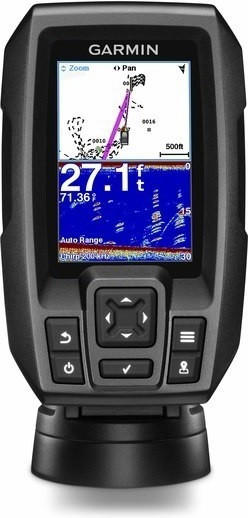
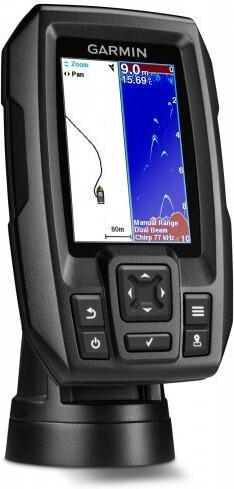
Frequency
The frequency of a fish finder refers to the number of times the sonar waves are emitted and detected in a given unit of time. A higher frequency, such as 200 kHz, provides finer details and is ideal for shallow water fishing or identifying smaller fish. In contrast, a lower frequency, like 50 kHz, can penetrate deeper waters but offers lower resolution.
For those looking for a fish finder with a higher frequency, the Garmin Striker 4 with Dual Beam Transducer is a great choice. It operates at a frequency of 200 kHz, allowing for precise fish detection in shallow waters. On the other hand, the Humminbird Helix 7 Chirp MSI GPS G3N offers a wide range of frequencies, including 50 kHz, 83 kHz, 200 kHz, and 800 kHz. This versatile fish finder is suitable for both shallow and deep water fishing, with the ability to provide detailed imaging and target separation. Remember, selecting the right frequency is crucial in ensuring accurate fish detection and maximizing your fishing experience!


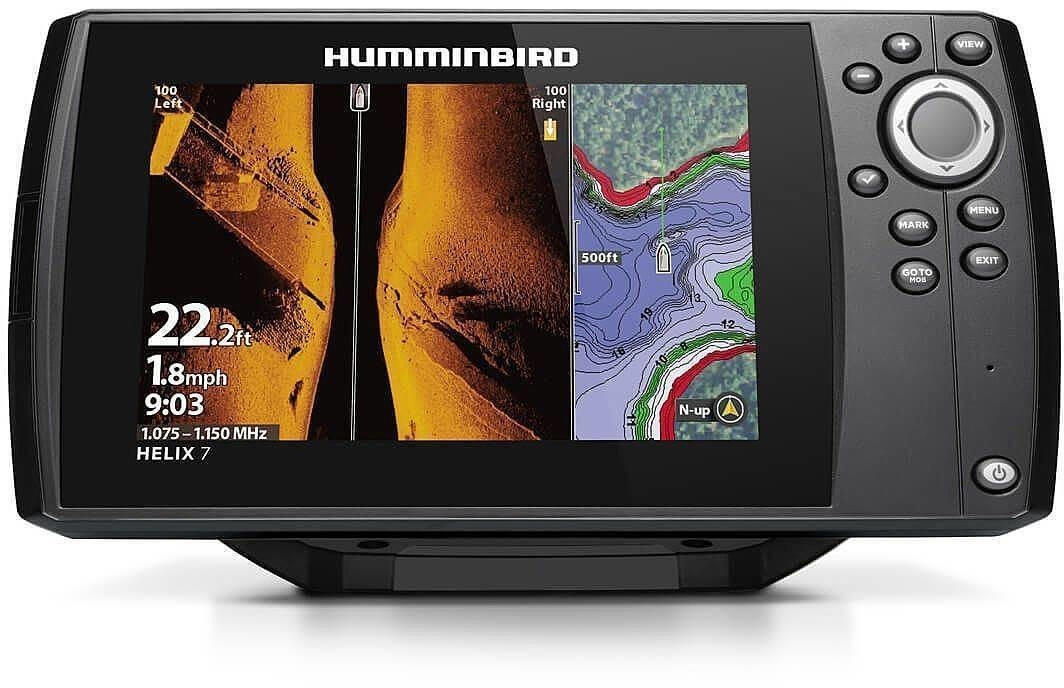
Power output
The power output of a fish finder is usually measured in watts and determines the strength of the sonar signal. Higher power output means a stronger and more accurate signal, leading to better depth penetration and detection of fish. For beginners or casual anglers, fish finders with power outputs ranging from 100-200 watts will suffice, such as the Humminbird PiranhaMAX 4 Fish Finder. It offers a dual-beam sonar system with a power output of 1600 watts peak-to-peak, allowing for clear imaging and fish identification. For more professional anglers or those fishing in deep waters, the Garmin Striker Plus 7Cv with Transducer provides a higher power output of 500 watts RMS, enabling precise and detailed imaging even in depths of up to 2,300 feet.

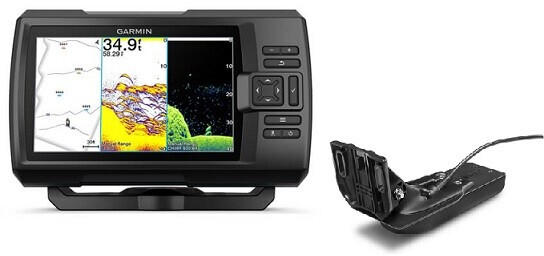
Screen size
The screen size not only affects the visibility of the underwater data but also impacts the overall user experience. Larger screens provide a more detailed and clearer view of the underwater environment, making it easier to identify fish and underwater structures. On the other hand, smaller screens are more compact and portable, ideal for kayaks or smaller boats where space is limited. To give an example, the Humminbird Helix 10 CHIRP Mega DI+ GPS G4N Fish Finder boasts a generous 10.1-inch full-color display, providing a vivid and detailed representation of underwater data. Another option is the Garmin Striker 4” Fishfinder, featuring a compact 4-inch color display which is perfect for anglers who prefer a smaller and more portable setup.

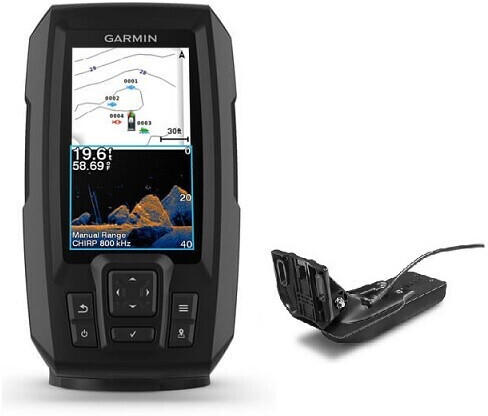
Display resolution
Display resolution refers to the number of pixels that the fish finder's screen can display, which ultimately determines the clarity and detail of the images produced. A higher resolution provides sharper and more detailed representations of the underwater environment, allowing anglers to spot fish, underwater structures, and other vital details more easily. For instance, the Humminbird Helix 5 offers a resolution of 800 x 480 pixels, providing clear and crisp imagery, while the Garmin Striker 7SV boasts an impressive resolution of 800 x 480 pixels as well as side scanning technology for a greater view of the underwater area.
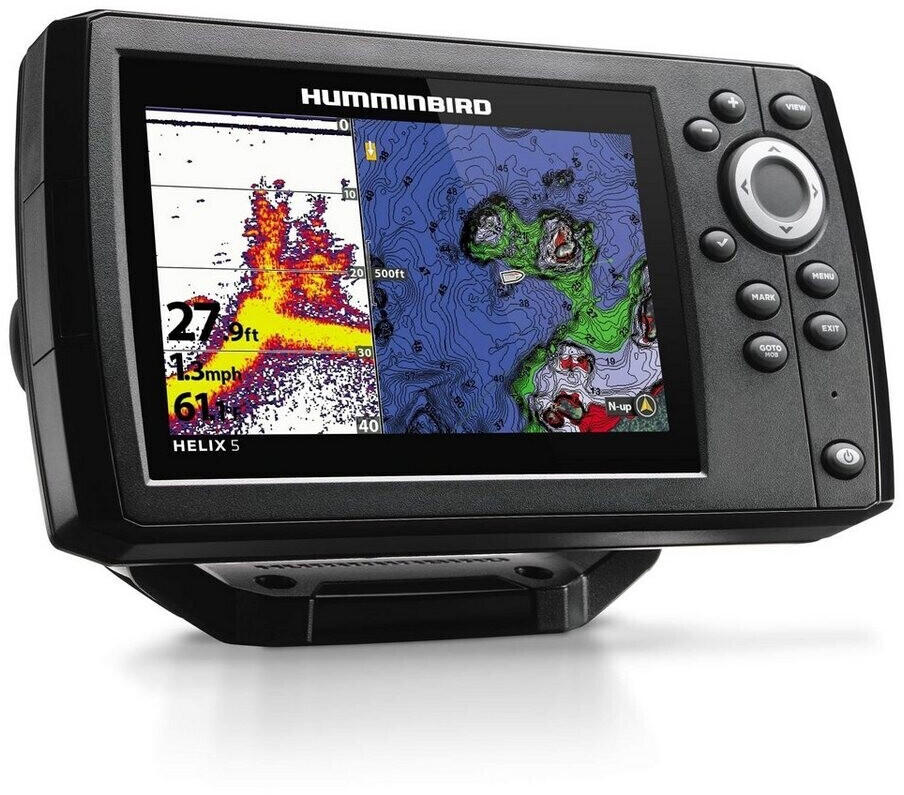
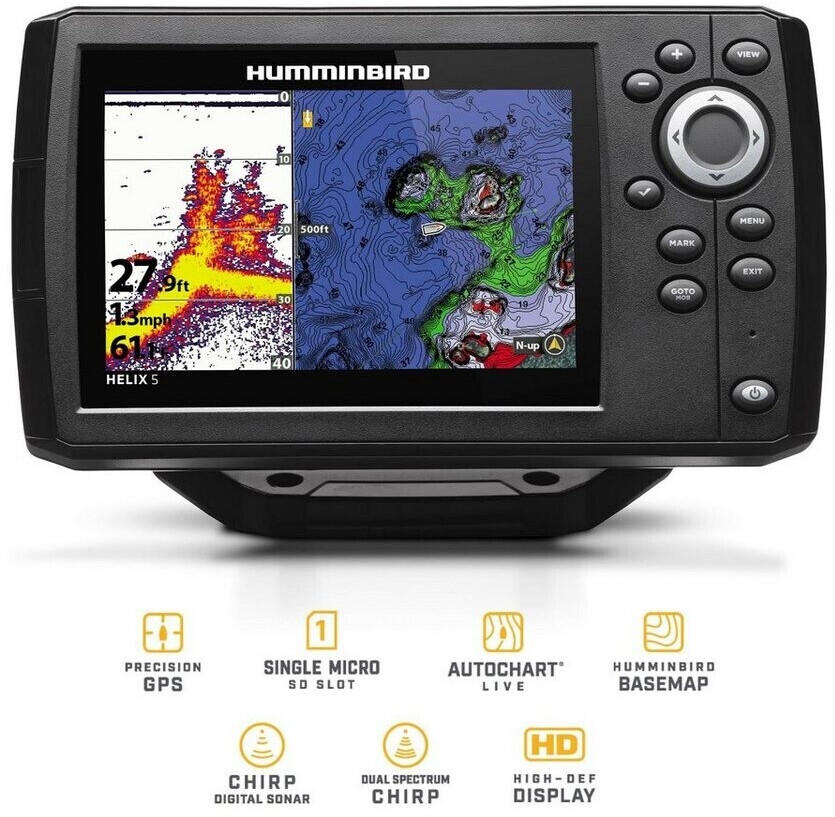
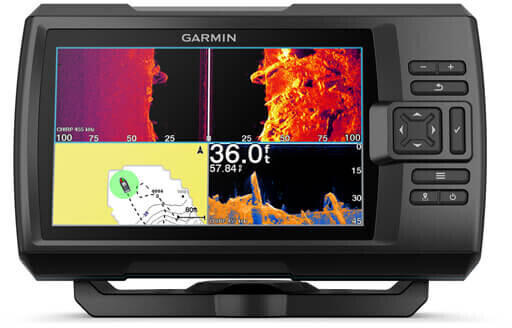

Sonar technology
This technology uses sound waves to detect underwater objects and determine the depth and contours of the water. One great example of a fish finder that utilizes sonar technology is the Garmin Striker 4 with Transducer. It offers CHIRP sonar that provides crystal-clear images of the underwater environment. Another option is the Lowrance Hook2 4X Fish Finder, which includes a wide-angle Broadband Sounder that enables easy tracking of fish and structures beneath the boat. For those looking for advanced sonar capabilities, the Humminbird Helix 7 Fish Finder is a notable choice. It features Dual Spectrum CHIRP sonar with SwitchFire technology, providing precise and detailed imaging of the water column.

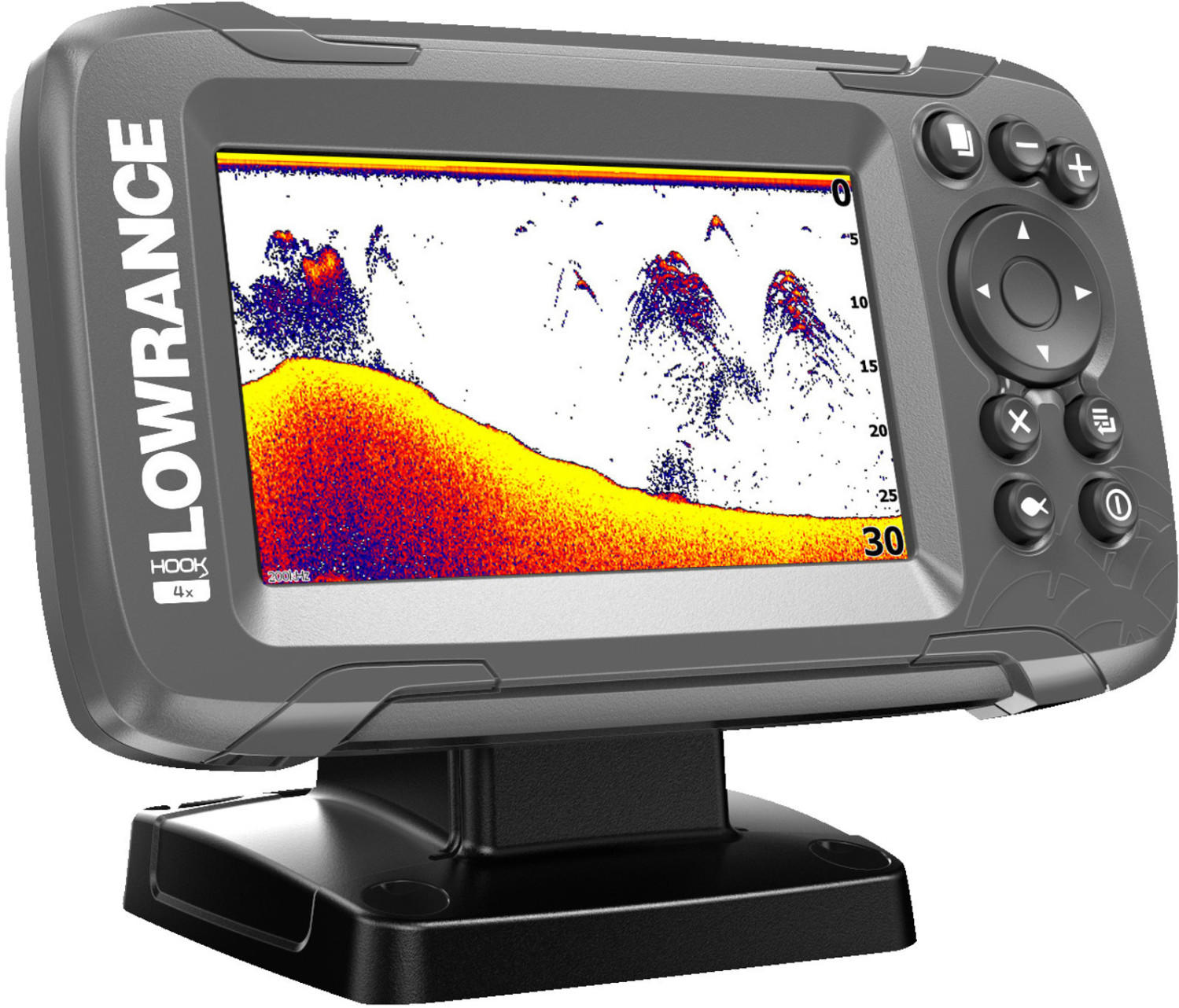
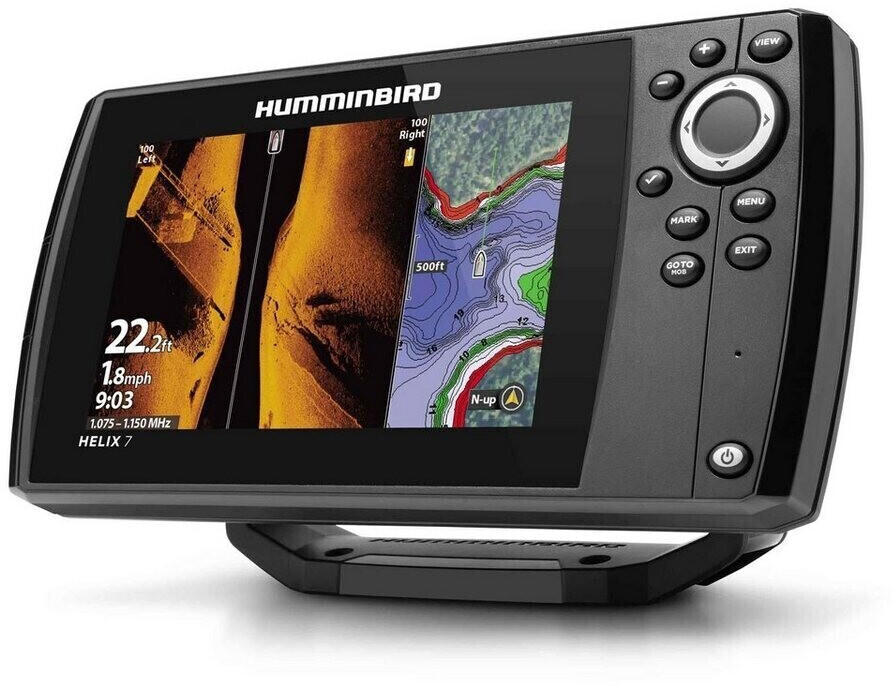
Transducer type
The transducer sends out and receives sonar signals, translating them into images on your fish finder display. There are different types of transducers to suit different fishing conditions and boat setups. For shallow water fishing or small boats, a transom-mount transducer, such as the Garmin STRIKER 4cv, is a great choice. It can be easily attached to the back of your boat and provides accurate bottom tracking and fish targeting. If you have a larger boat or prefer a more versatile option, a thru-hull transducer, like the Lowrance HDI Skimmer Transducer, is a popular choice. It is installed through the hull of the boat and provides clear imaging even at high speeds. Split-beam transducers, such as the Humminbird XNT 9 20 T are ideal for improving target separation and reducing interference from other equipment. They are suitable for both fresh and saltwater fishing. Finally, if you are looking for a portable transducer to use on different boats, an ice fishing transducer like the Vexilar FLX-28 can be easily adapted for use in ice fishing conditions as well.

Waterproof rating
This is crucial as it determines the device's ability to withstand water exposure without getting damaged. For instance, the Garmin Striker 4 is an excellent choice with a waterproof rating of IPX7, meaning it can resist water immersion up to 1 meter for 30 minutes. Another reliable option is the Lowrance HOOK2-7 fish finder, which boasts an IPX7 waterproof rating as well. It's important to note that a high waterproof rating ensures the fish finder remains functional even when exposed to rain, splashes, or accidental submersion, providing peace of mind during your fishing adventures.
GPS capability
Having GPS functionality on your fish finder can greatly enhance your fishing experience by providing you with accurate positioning and navigation. A great example of a fish finder with GPS capability is the Garmin Striker Plus 7sv. This fish finder comes with a high-sensitivity GPS receiver that allows you to mark and return to your favorite fishing spots, docks, and other waypoints easily. Additionally, it offers Quickdraw Contours mapping software that creates custom fishing maps of the areas you fish, giving you detailed insights into underwater structures. Another well-rounded option is the Humminbird Helix 7 CHIRP GPS G3, which boasts precise GPS features to help you track your movements and easily navigate open waters. Its built-in Humminbird Basemap provides detailed charts and information for more accurate and efficient fishing. Both the Garmin Striker Plus 7sv and the Humminbird Helix 7 CHIRP GPS G3 offer reliable GPS capabilities, providing you with essential information to optimize your fishing game.

Mapping functionality
It allows you to create detailed maps of the underwater terrain, which is crucial for identifying potential fishing spots and avoiding hazards. One excellent option in this category is the Garmin Echomap Plus 73sv. This fish finder comes with built-in BlueChart g3 maps that cover both coastal and inland waters, providing detailed contour lines, shallow water highlight, and depth ranges. Moreover, it offers Quickdraw Contours software that enables you to create custom HD fishing maps with 1-foot contours in real-time. If you're looking for a more budget-friendly option, the Humminbird Helix 5 CHIRP GPS G2 is another great choice. It features Humminbird's UniMap cartography, covering the contiguous U.S. coastline and inland lakes with depth contours, navigation aids, points of interest, and more. Additionally, this unit offers AutoChart Live, allowing you to map lake bottoms in real-time while fishing. Depending on your needs and budget, these fish finders offer impressive mapping functionality that can greatly enhance your fishing experience.
Chartplotter integration
This technology allows you to view and control your fish finder on the same screen as your navigation charts, making it easier to locate fishing spots and navigate the water. One example of a fish finder with excellent chartplotter integration is the Garmin ECHOMAP UHD 93sv. It features a full-color, high-resolution display that can be split to show both sonar and charts simultaneously. The built-in GPS receiver provides accurate positioning, while the LakeVu HD maps allow you to view detailed underwater features. Another great option is the Lowrance HOOK2-9, which has a 9-inch display and an intuitive, easy-to-use interface. It comes with Navionics+ maps for detailed chartplotting capabilities. These fish finders with chartplotter integration provide a seamless user experience and enhance your fishing expeditions.
Networking capabilities
Networking allows you to connect and share information between your fish finder and other devices, such as chartplotters, smartphones, and tablets. This feature enhances your fishing experience by providing advanced functionality like seamless data transfer, wireless control, and updates.
One example of a fish finder with impressive networking capabilities is the Garmin ECHOMAP UHD 93sv with GT54UHD-TM Transducer. It features built-in Wi-Fi, allowing you to connect to the Garmin ActiveCaptain app for wireless control and access to the Quickdraw Contours online community. The fish finder also has NMEA 2000 support, enabling connectivity with other NMEA 2000-compatible devices for seamless integration. Additionally, it is compatible with Garmin Panoptix all-seeing sonar technologies, which provide real-time scanning and LiveVü Forward and LiveVü Down sonar. This allows for incredible detail and accuracy when identifying fish and structures.
Target separation
A higher target separation allows for a clearer and more detailed image of the fish and their positions. The Garmin Striker 4 with Transducer is a popular choice amongst anglers with its impressive target separation of 2 inches, providing a clear view of individual fish. Another great option is the Humminbird Helix 5 G2 CHIRP GPS Fish Finder which boasts a target separation of 0.7 inches, allowing for accurate identification of fish and improved fishing efficiency. These fish finders excel in providing accurate and detailed information on fish movements and are excellent choices for avid anglers looking for a device with exceptional target separation capabilities.


Bottom contour imaging
This feature allows you to see the shape and structure of the underwater terrain, helping you identify potential fish-holding areas. One product that excels in this area is the Lowrance HDS Live Fish Finder. With its Active Imaging feature, it provides highly detailed imagery to reveal bottom structure, vegetation, and even fish. Another great option is the Humminbird Helix 7 Fish Finder. It utilizes Dual Spectrum CHIRP sonar to deliver clear and precise images of the underwater environment. Both of these fish finders offer excellent bottom contour imaging capabilities and will greatly enhance your fishing experience.
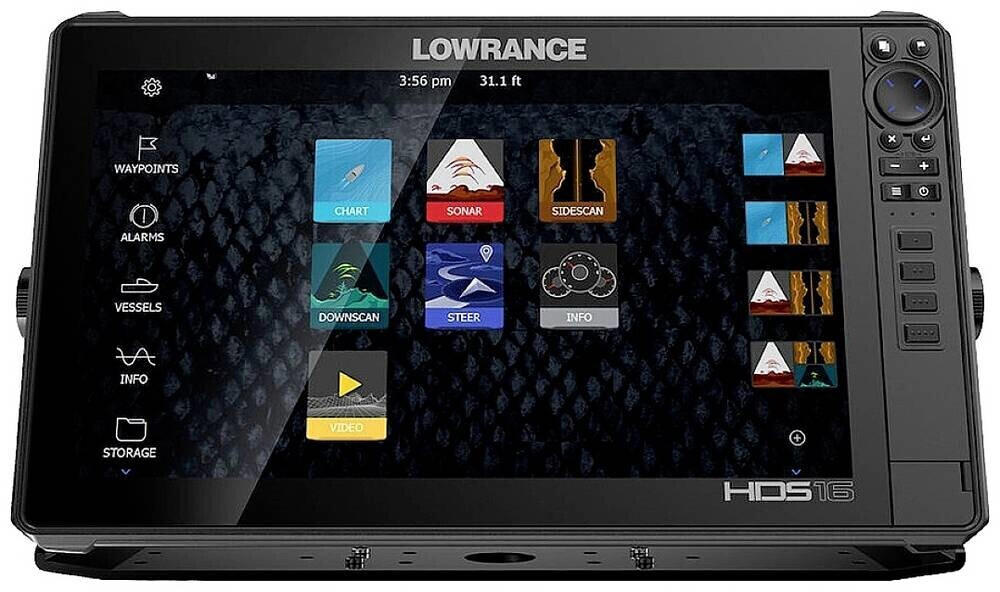

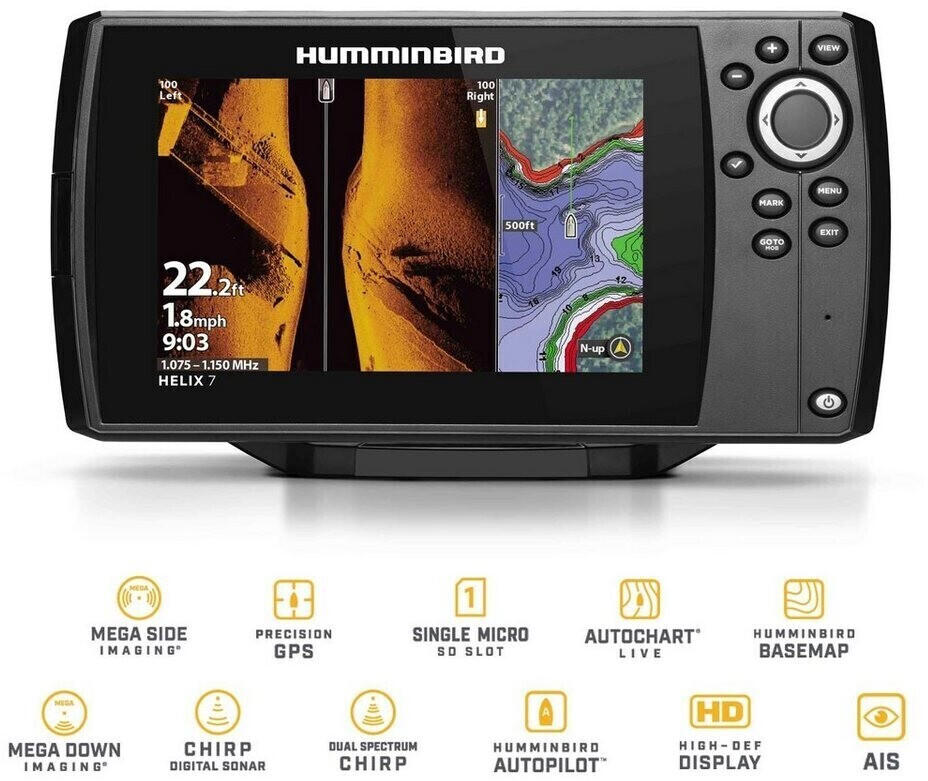
Fish arch identification
Fish arches are crucial as they represent fish swimming in the water. A high-quality fish finder should have advanced sonar technology, such as CHIRP or dual-frequency sonar, to provide detailed and clear arches. For example, the Garmin Striker 4 with Transducer utilizes CHIRP sonar to display well-defined fish arches, allowing anglers to easily differentiate between fish and underwater structures. Another excellent option is the Lowrance HOOK2 4X Fish Finder, featuring auto-tuning sonar, which is beneficial for instantly capturing fish arches without manual adjustments. It's crucial to choose a fish finder model that excels in fish arch identification for a more productive and enjoyable fishing experience.


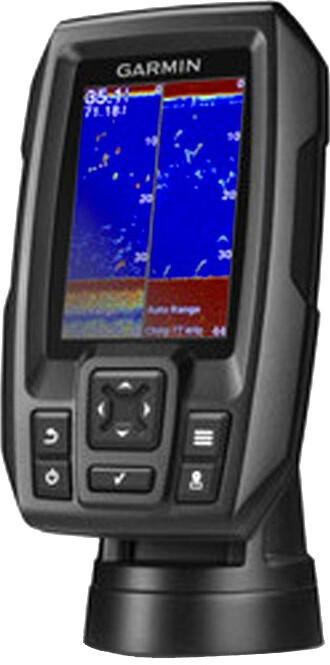
Split screen display
This allows you to view multiple sonar information simultaneously, providing a more comprehensive and detailed picture of what's happening underwater. A great example of a fish finder with split screen display is the Lowrance Elite Ti2. It features a multi-window display that allows you to view a combination of sonar options, such as SideScan, DownScan, and traditional CHIRP sonar, all at once. This gives you the ability to easily compare different views and quickly identify fish and underwater structures. Other fish finders with split screen display options include the Garmin Striker Plus 9sv and the Humminbird Helix 7. These fish finders offer split screen functionality with various customizable viewing options, enabling you to optimize your fishing experience for different conditions and locations.
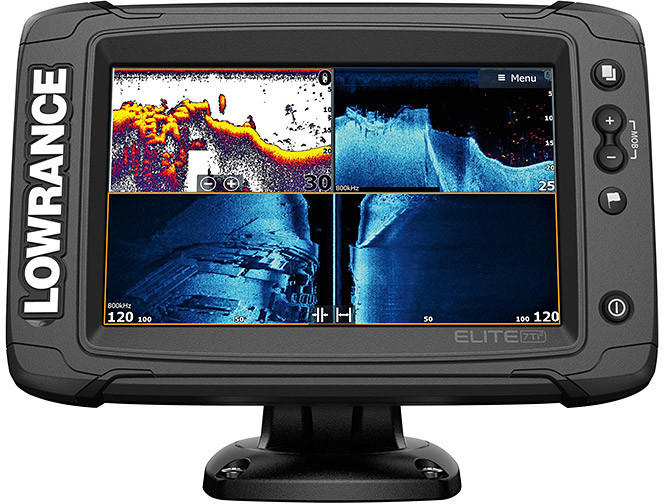
Multiple beam angles
This technology allows you to get a greater coverage area under your boat, giving you a more accurate and comprehensive view of the underwater landscape. For example, the Garmin Striker 4 with Dual-Beam Transducer offers multiple beam angles, including a wide beam for larger coverage area and a narrow beam for higher resolution imaging. Another option is the Lowrance HOOK Reveal 5 TripleShot fish finder, which utilizes a triple-shot transducer that provides three different angles of coverage, allowing you to effectively scan a wider area and identify fish targets in various locations. Overall, fish finders with multiple beam angles provide you with the flexibility to adapt to different fishing conditions and increase your chances of a successful catch.


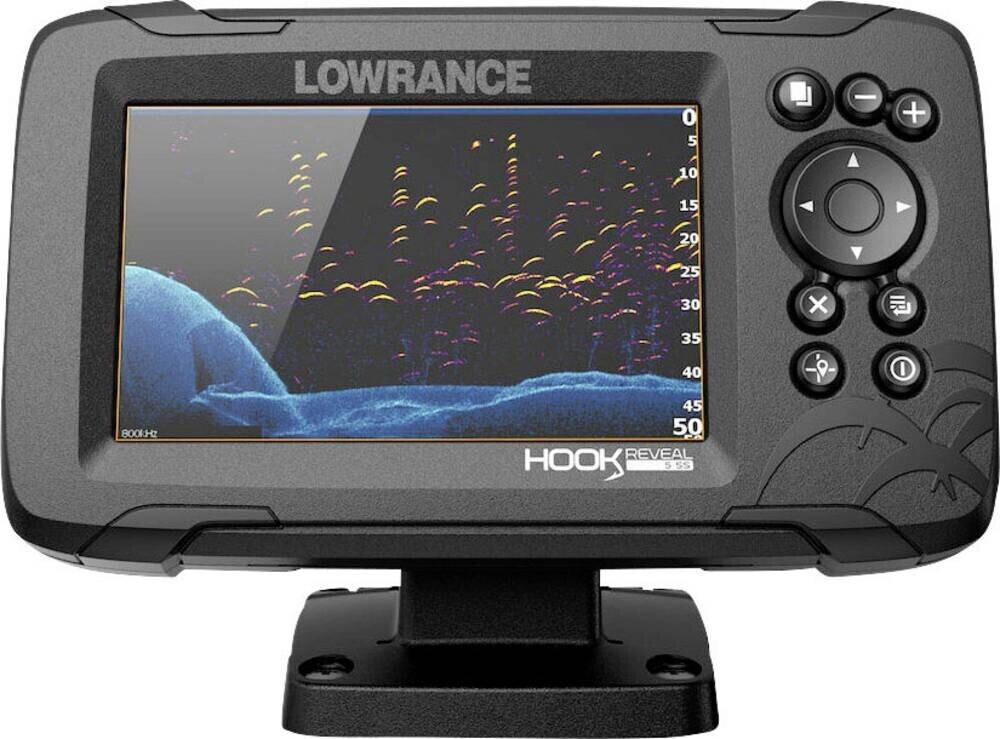
Temperature sensing
The ability to measure water temperature can give you valuable information about the target species and their behavior. One product that stands out in this regard is the Garmin Striker 4 with Transducer. This fish finder not only provides accurate temperature readings but also displays them graphically on the screen, allowing you to easily identify temperature changes. Another top-of-the-line option is the Humminbird Helix 5 Chirp GPS G2 Fish Finder. It features a built-in temperature sensor that provides precise readings. With its large screen and advanced temperature display, this fish finder is perfect for avid anglers.
There are several segments within the fish finder market that cater to different needs. In the mid-range segment, the Lowrance Hook Reveal 7 SplitShot Fish Finder is a great option. It offers temperature sensing capabilities along with a range of other features such as high-resolution imaging, GPS navigation, and split-screen views. For those on a budget, the Lucky Portable Fish Finder is a fantastic choice. This compact device may be small in size, but it still offers temperature readings and can be easily carried around. Whether you are a professional angler or a beginner, there is a fish finder available with temperature sensing capabilities suited to your needs.

Manually adjustable sensitivity
This function allows you to modify the device's sensitivity settings according to your fishing conditions and location. By adjusting the sensitivity, you can control the fish finder's ability to detect and display objects in the water column accurately.
One fish finder that offers a manually adjustable sensitivity feature is the Garmin Striker 4 Fish Finder. With its intuitive user interface, you can easily adjust the sensitivity settings to find and track fish in both shallow and deep waters. Additionally, the device includes a dual-beam transducer that provides a detailed representation of fish and underwater structures, maximizing your chances of a successful fishing experience. Another popular fish finder with a manually adjustable sensitivity feature is the Lowrance HOOK2 4X Fish Finder. This compact and affordable option offers a wide-angle, 200 kHz sonar coverage with adjustable sensitivity to ensure accurate fish detection. Its simplified menu system and auto-tuning sonar further make it a user-friendly choice for anglers of all skill levels.


Range of zoom levels
This determines the level of detail you can see on the display, allowing you to closely examine the underwater structure and spot your target species with greater clarity. Some fish finders offer a limited zoom range, while others provide a wide range of zoom levels for enhanced accuracy.
For example, the Humminbird Helix 5 CHIRP GPS G2 Fish Finder offers an impressive zoom range of 2x-8x, displaying a wide field of view at lower zoom levels and providing more detailed views at higher zoom levels. On the other hand, the Garmin Striker 4 with Transducer, 3.5" GPS Fishfinder offers a zoom range of 2x and 4x, allowing you to focus on specific areas of interest with sufficient detail.
It's worth noting that high-end fish finders such as the Lowrance HDS Carbon 16 StructureScan 3D Fish Finder provide even more advanced zoom capabilities, with some models offering a range of up to 10x. These top-tier fish finders utilize advanced sonar technologies like StructureScan 3D to offer incredibly detailed views of the underwater terrain at different zoom levels.
Real-time water temperature updates
This feature allows anglers to accurately gauge the temperature of the water they are in, which can greatly impact fishing success. One product that offers this feature is the Garmin Striker 4 with Transducer. With a clear display and built-in GPS, it provides real-time information on water temperature, allowing you to know exactly when and where the fish are biting. Another option is the Humminbird Helix 5 CHIRP GPS G2 Fish Finder. This fish finder not only offers accurate temperature readings but also utilizes CHIRP Sonar technology to provide detailed images of underwater structures, making it easier for you to locate the best fishing spots.



Background noise suppression
One of the top products that excel in this area is the Garmin Striker Plus 7cv. It features a CHIRP traditional sonar that is designed to provide clear and detailed images of fish and underwater structures while minimizing noise. With its ClearVü scanning sonar technology, it offers impressive background noise suppression capabilities, allowing anglers to have a more accurate view beneath the water surface. Another excellent option is the Lowrance HOOK Reveal 5 SplitShot. It comes equipped with a wide-angle CHIRP sonar, which effectively suppresses background noise for exceptional clarity, making it easier to locate fish and understand the underwater environment.
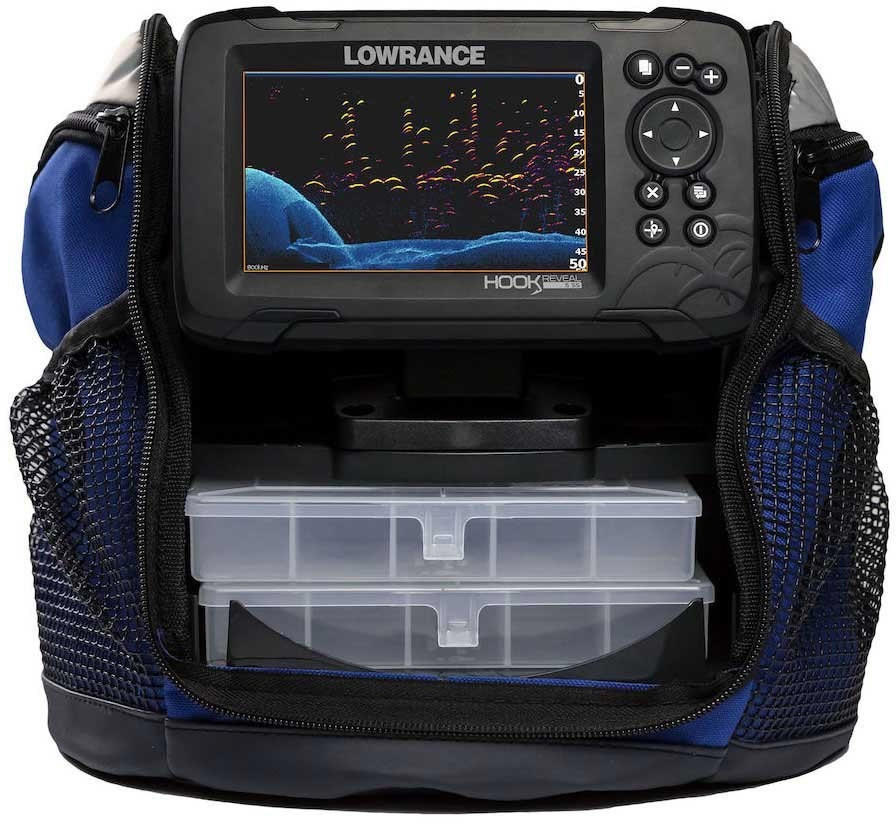
Depth alarm
This feature allows you to set a specific depth range and notifies you when the fish finder detects water depths above or below that range. The depth alarm is particularly useful for avid anglers who want to avoid submerged obstacles or stay within a specific depth zone to target certain types of fish.
There are several fish finders on the market that offer a reliable depth alarm. One such option is the Lowrance HOOK Reveal 5x Fish Finder, which provides a shallow and deep depth alarm along with a clear and vibrant SolarMAX display. Another excellent choice is the Garmin Striker 4 Fish Finder, which includes a depth alarm with a graphical depth scale, making it easy to monitor changes in water depths. These fish finders provide accurate depth information, allowing you to fish with confidence and avoid dangerous situations underwater.


Fish alarm
One great option is the Garmin Striker 4 with Transducer, which has a built-in fish alarm that helps you detect and target fish effortlessly. This fish finder also includes CHIRP sonar technology, allowing you to get precise and clear images of fish and underwater structures. Another top choice is the Humminbird Helix 5, equipped with a fish alarm that produces an audible signal when fish are detected. The Helix 5 also comes with a dual beam sonar, providing detailed fish arches and clear bottom readings. These fish finders offer reliable fish alarm features, making them excellent choices for any angler.




Screen backlighting
A fish finder with a high-quality backlighting system ensures optimal visibility even in low-light conditions or bright sunlight, allowing you to easily read and interpret the information displayed on the screen. The Lowrance HOOK-7x Fish Finder is an excellent choice with its bright and clear LED-backlit display, ensuring visibility even in direct sunlight. Another great option is the Garmin Striker 4 Fishfinder, which features a vibrant, 3.5-inch color display with UV backlighting for excellent visibility in any lighting condition. Additionally, the Humminbird Helix 5 Fish Finder offers a crisp, full-color display with adjustable backlight settings, making it easy to adapt to varying lighting conditions.


Mapping memory capacity
This feature determines the amount of detailed mapping data the device can store and display. Some fish finders come with preloaded maps, while others allow you to upload your own custom maps. For example, the Garmin Striker Plus 7SV offers an impressive mapping memory capacity of 2 million acres, allowing you to store a vast amount of detailed maps for your fishing locations. Another excellent option is the Humminbird HELIX 7 CHIRP GPS G2, which boasts a larger mapping memory capacity of up to 3,000 waypoints and 45 routes, ensuring you have enough space for your mapping needs. It's important to consider the size and type of maps you plan to use when selecting a fish finder with the appropriate mapping memory capacity.
Battery life
It is crucial to look for a fish finder with a decent battery life for extended fishing trips or repetitive use. The Lowrance Hook Reveal 7 SplitShot Fish Finder is an excellent option with a long-lasting battery life of up to 9 hours, allowing anglers to fish all day without worrying about losing power. Another standout choice is the Garmin Striker Plus 4 with Dual-Beam Transducer which boasts an impressive battery life of up to 10 hours, ensuring continuous fishing enjoyment.
When it comes to battery life, fish finders can generally be divided into two groups based on their power source. The first group consists of fish finders powered by replaceable batteries, such as AA or AAA batteries. These devices, like the Humminbird HELIX 5 CHIRP Fish Finder, offer the advantage of being able to easily replace batteries on the go. On the other hand, the second group of fish finders relies on rechargeable batteries integrated into the unit. One standout example in this category is the Lowrance Elite-7 Ti2 Fish Finder, which features a built-in rechargeable battery and can last up to 6-8 hours on a single charge.
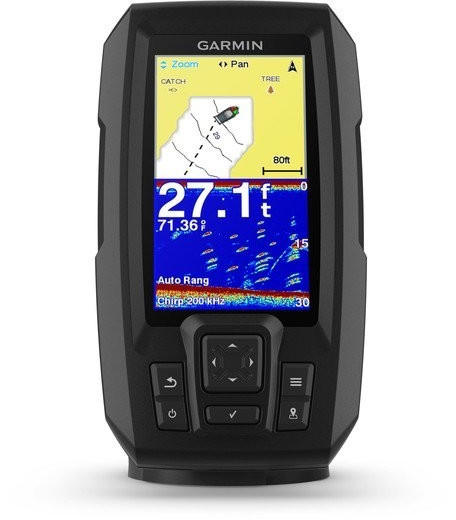


Mounting options
There are several types of mounting options to suit different needs. For instance, the 'fixed mount' option may be suitable for avid anglers who own their vessels and want a permanent installation. A great example of a fixed mount fish finder is the Garmin Striker Plus 4cv, which offers a variety of mounting options, including transom, trolling motor, and kayak mounts. On the other hand, for anglers who prefer portability and ease of use, a 'portable' fish finder like the Deeper PRO Smart would be an excellent choice. Portable fish finders are easily attachable to the fishing line and can be cast out to find fish, offering convenience and flexibility.
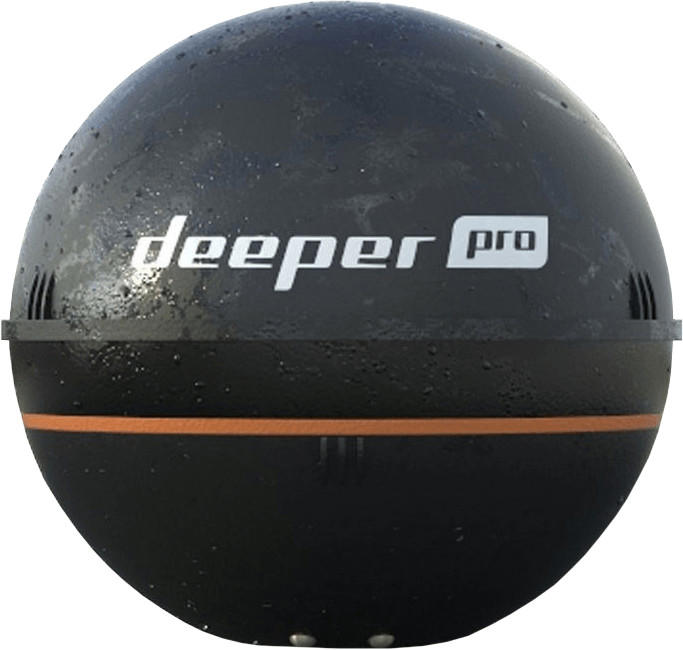
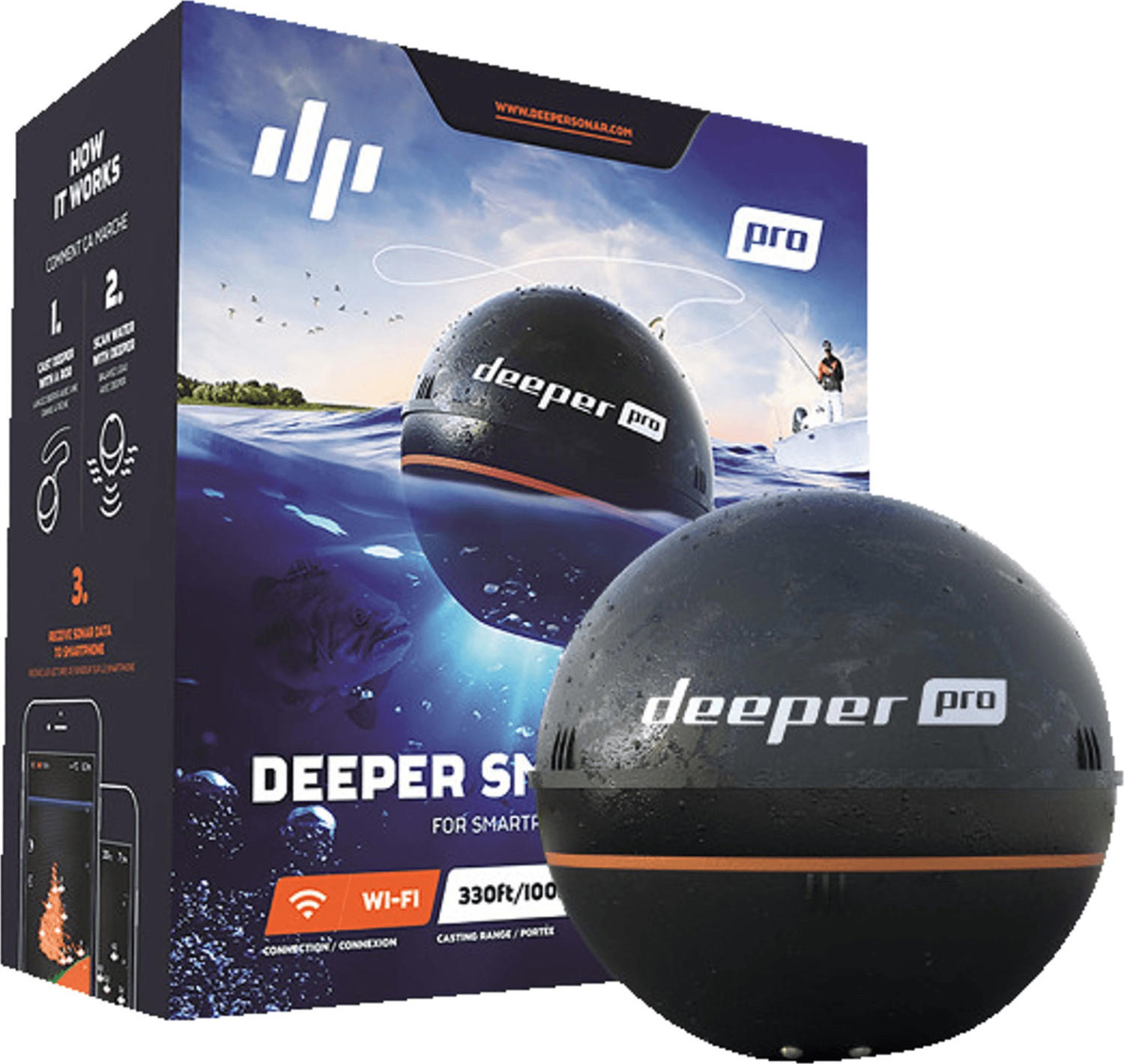
Portability
One excellent option for a portable fish finder is the Garmin Striker 4 which features a compact design and can easily be mounted or dismounted. It comes with a lightweight transducer and a small screen that provides clear and detailed images of fish and underwater structures. Another portable fish finder to consider is the Deeper Smart Sonar Pro+. This castable device can be connected wirelessly to your smartphone or tablet, allowing you to view real-time sonar readings from shore or on a small vessel. The compact size and lightweight design make it convenient for travel and packing.
In terms of portable fish finders, there are a few groups or segments to consider. One group includes wrist-mounted fish finders like the Eyoyo Portable Bluetooth Fish Finder and the ReelSonar iBobber. These devices can be worn on your wrist like a watch, allowing for easy access to sonar information while leaving your hands free for fishing. Another segment is the handheld fish finders, with options like the LUCKY Handheld Fish Finder and the Venterior Portable Fish Finder. These compact devices can be held in one hand and are perfect for anglers on the go.

Ease of use
A user-friendly interface and intuitive design can greatly enhance your fishing experience. One example of a fish finder with excellent ease of use is the Garmin Striker 4, which comes with a 3.5-inch color display and a keypad control interface that makes navigating through its features a breeze. Another great option is the Humminbird Helix 5, featuring a user-friendly menu system and a high-resolution display that provides clear and precise imaging. For anglers who prefer touch screen interfaces, the Lowrance Elite-7 Ti2 offers a responsive touch display with easy-to-use menus. These fish finders have been praised for their simplicity and intuitive design, allowing any angler to effortlessly operate them while out on the water.


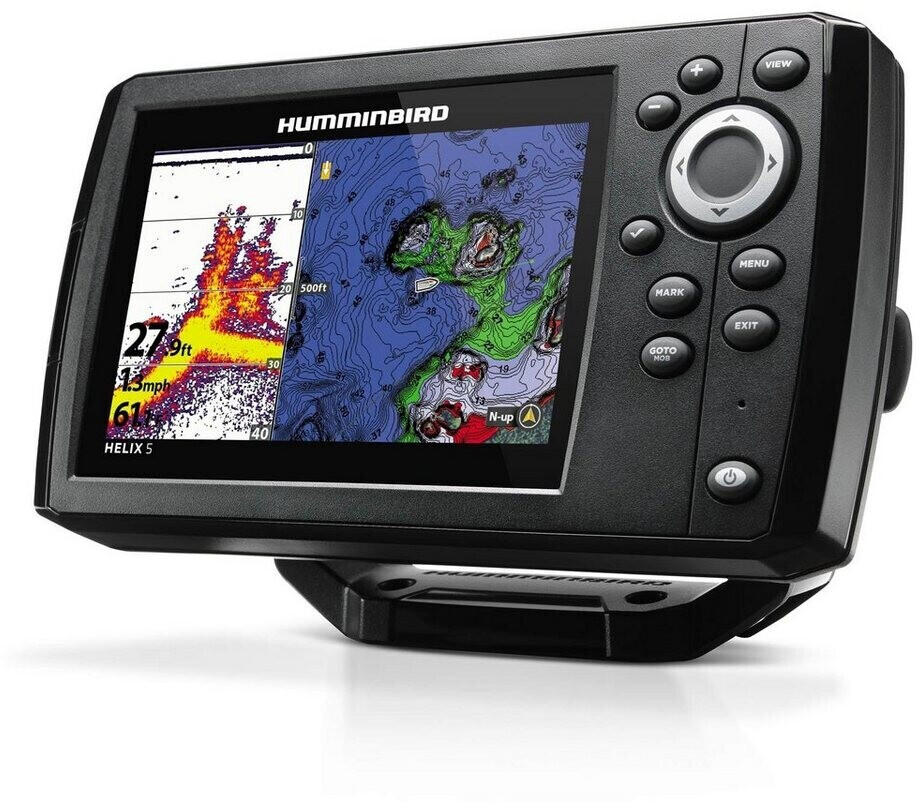
User interface customization
A user-friendly and customizable interface can greatly enhance your fishing experience. Look for fish finders that allow you to tweak the settings according to your preferences, with options for adjusting the screen layout, color palettes, and the ability to save your favorite custom settings. The Garmin Striker 4 is an excellent choice in this regard, offering a 3.5-inch color display with adjustable backlight and user-selectable color schemes. Additionally, the Humminbird Helix 5 series is another option to consider, featuring a 5-inch color display with customizable views and split-screen functionality, allowing you to monitor multiple readings at once. Both products provide a high degree of user interface customization to optimize your fishing experience.



Price
When shopping for fish finders, one of the most important factors to consider is price. The price of fish finders can vary greatly depending on the features and capabilities they offer. For those on a budget, entry-level fish finders can be found for as low as $100 or less, such as the Garmin Striker 4, which offers a 3.5-inch color display, CHIRP sonar technology, and 2D scanning capabilities. For mid-range options, fish finders in the $200-$500 price range like the Lowrance Hook2 5 can provide larger displays, GPS navigation, and down-imaging or side-imaging technology. High-end fish finders, which can range in the thousands of dollars, like the Humminbird Helix 12 Chirp GPS G2N, offer 12-inch color displays, advanced sonar capabilities, and networking capabilities for multi-unit systems. Ultimately, the price range you settle on will depend on your specific fishing needs and budget.
Variety of brands
Each brand offers its own set of features, benefits, and limitations. Some popular brands to consider are Garmin, Lowrance, and Humminbird.
Garmin fish finders are known for their high-quality products and advanced technologies. For example, the Garmin Striker 4 offers a 3.5-inch color display, CHIRP sonar technology, and built-in GPS for precise navigation. However, some users have reported that the user interface can be a bit complex, requiring a learning curve.
Lowrance is another reputable brand in the fish finder industry, renowned for its intuitive user interface and powerful fish-finding capabilities. The Lowrance Elite-7 Ti2 is one such option that stands out, featuring a 7-inch touchscreen display, high-resolution sonar, and wireless connectivity. The downside to Lowrance fish finders is that they can be on the pricier side compared to other brands.
Humminbird is known for its cutting-edge imaging technologies, incorporating side imaging, down imaging, and 360-degree imaging for comprehensive underwater insight. The Humminbird Helix 5 is a popular choice, offering a 5-inch color display, dualbeam PLUS sonar, and SwitchFire sonar that lets users adjust to different fishing conditions. However, some users have noted that Humminbird fish finders can be challenging to customize and set up for individual preferences.
Segmenting the market further, other brands such as Raymarine and Deeper also offer fish finders that cater to specific needs. For example, Raymarine specializes in marine electronics, and their Axiom series, such as the Raymarine Axiom 7, is highly regarded for its integration capabilities with other computer systems and instruments on board. On the other hand, Deeper produces portable and castable fish finders, such as the Deeper PRO+ Smart Sonar, which can be easily used from a boat, kayak, or shore, making it a great option for on-the-go fishing enthusiasts.

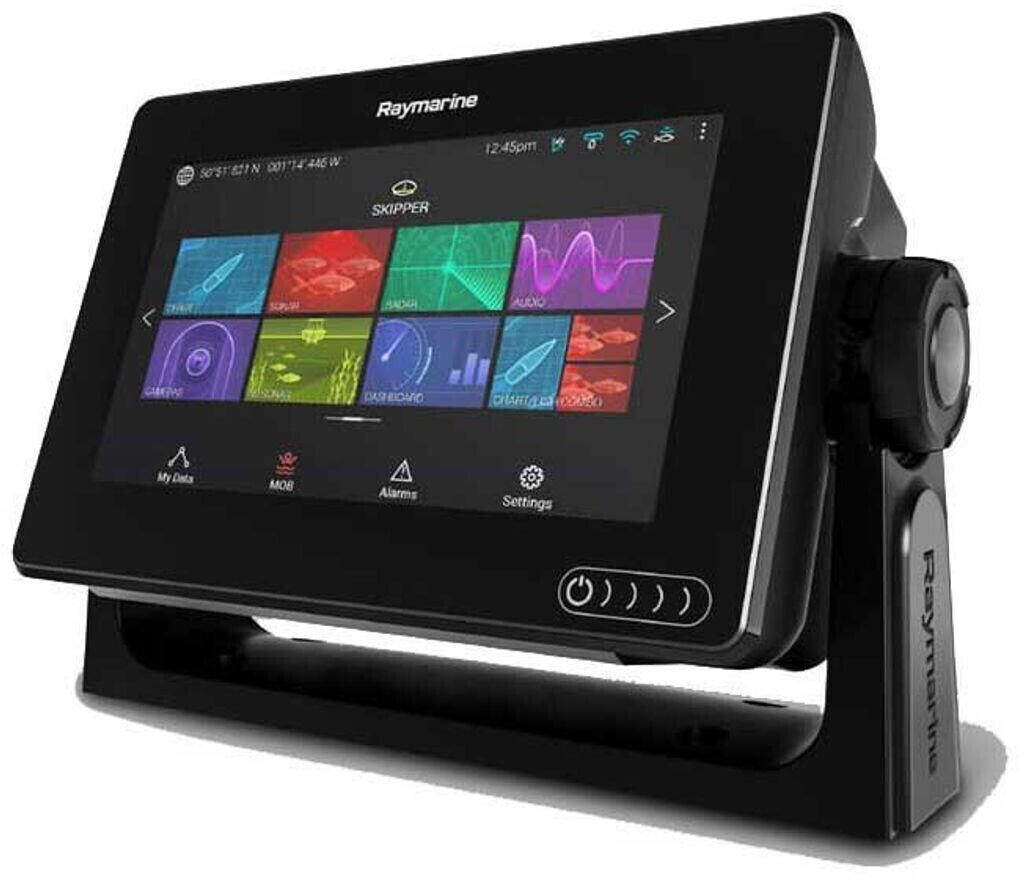

Considering the pros and cons of different brands will help you determine the one that aligns best with your fishing needs and preferences, ensuring that you choose a fish finder that meets your requirements on the water.